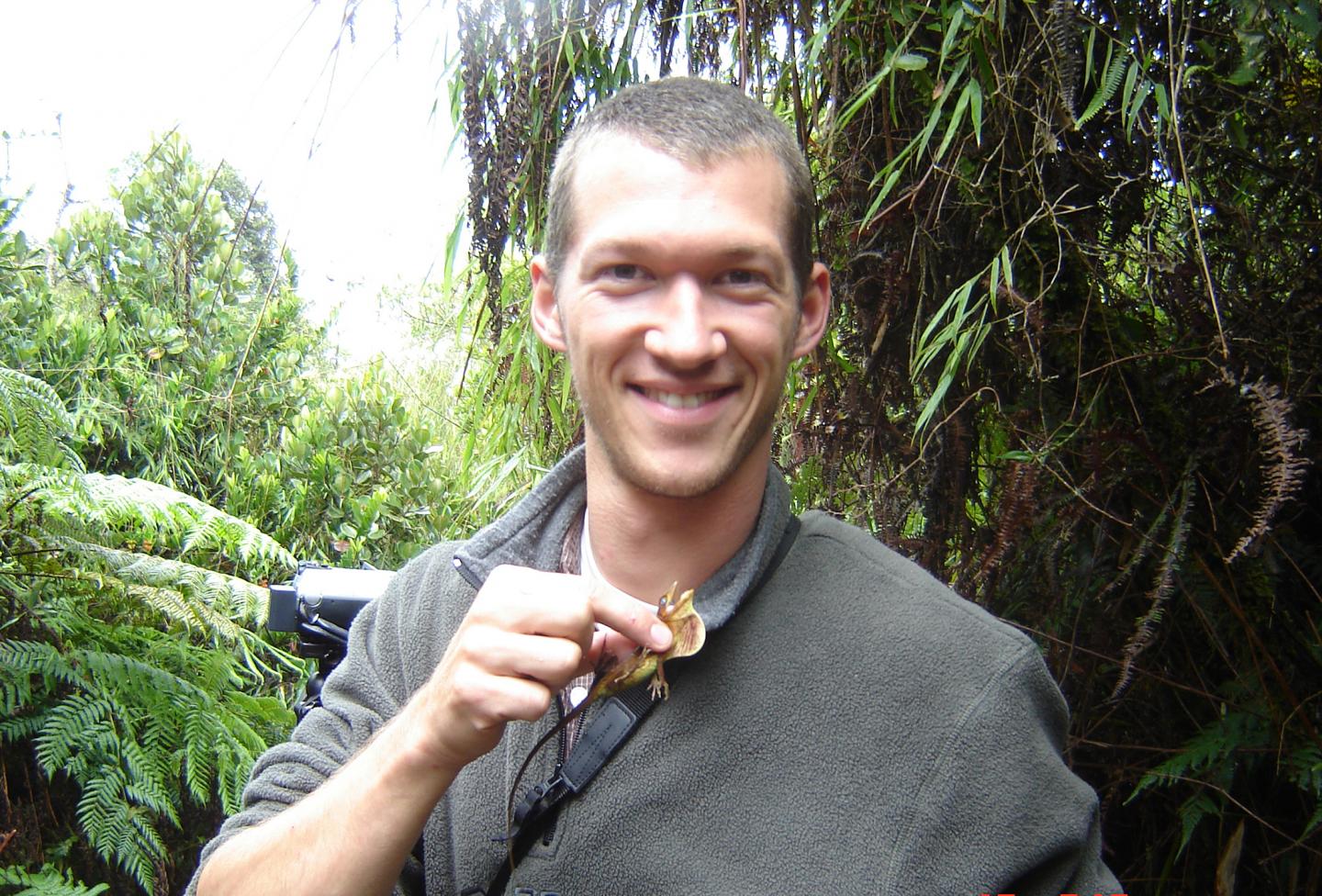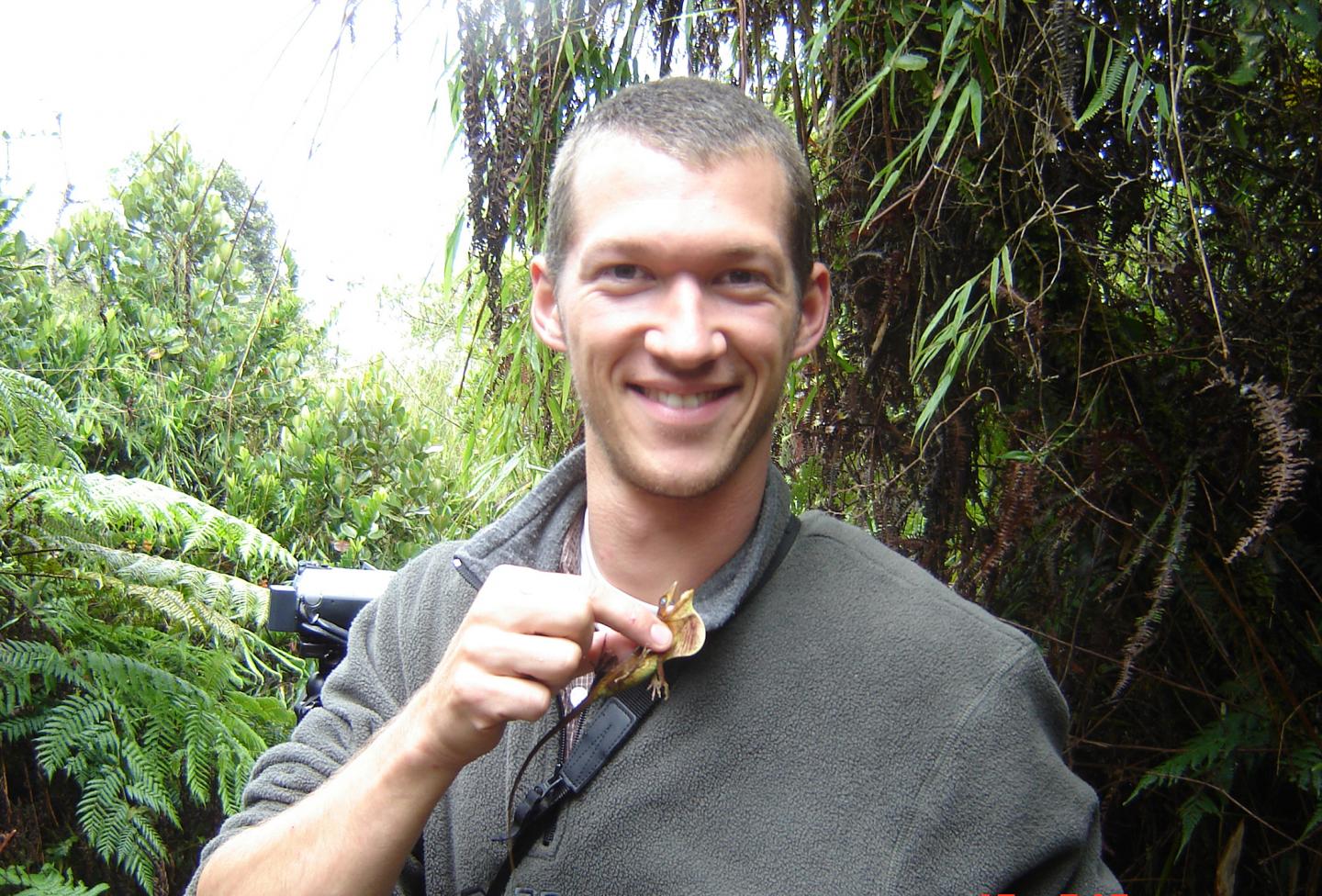
Credit: Luke Mahler
EAST LANSING, Mich. – While many animals try to avoid sticky situations, lizards evolved to seek them out.
Travis Hagey, Michigan State University evolutionary biologist, shows how different groups of lizards – geckos and anoles – took two completely different evolutionary paths to developing the beneficial trait of sticky toe pads.
In a paper published in the journal Evolution, Hagey showed that anoles seemed to commit to a single type of toe pad, one that generates lots of friction. As a group, they were able to develop sticky toe pads early. Geckos, meanwhile, opted for an evolutionary "drunken stumble," and seemingly didn't commit to a single approach, instead evolving toe pads that generate plenty of friction in some species and others that excel at sticking directly to a surface.
The stumbling theory, formally known as the Brownian motion model, best explains gecko evolution. Different groups of geckos sought various approaches and jumped at adaptive solutions. They achieved the beneficial traits by pursuing different ways, moving forward some eras and backward during others, Hagey said.
Did anoles have but one option? Is there merely one evolutionary path to become the best tree-climbing lizard? Were geckos more laissez faire with evolution?
"We're trying to explain how evolution works and how predictable it is," said Hagey, who's part of MSU's BEACON Center for Evolution in Action. "Good science answers one question while producing more questions. Anoles and geckos are two different large groups of lizards. They live on different continents, and evolutionarily, they're separated by 250 million years of time. So even though they have some of the same traits, you can't assume that they were developed the same way."
Evolution is a tinkerer, he added. Hagey likens it to a person who lives on a dirt road and decides to build a bicycle.
"But they can use only the parts they can get their hands on and make modifications and repairs until they get a bike they like," Hagey said. "Two different people might build two different bikes that both work well on dirt roads, but the process and steps they went though will probably be different. The same is true for geckos and anoles. They both evolved sticky toes but got there different ways."
Hagey's research team included scientists from the University of Idaho, Cambridge, the University of London, and Lewis and Clark College.
Leg length PLOSONE paper
In a related paper in PLOSONE, Hagey chose to focus on limb length. Geckos and anoles live on trees and climb vertical surfaces. They have to deal with the same mechanical aspects, but did they take different paths to gain those advantages? Did they evolve traits that emphasized sprint speed over balance or vice versa?
"Studying sticky toe pads and limb length help scientists understand how and why animals are shaped the way they're shaped and the mechanics of their movement," Hagey said. "You'd think there would be only one good way to climb a tree or one good way to swim, but there are many."
For both studies, Hagey traveled to exotic locales in the Dominican Republic, Australia and Thailand. Visiting a breeder in Oklahoma allowed him to observe 15 lizard species from five continents. Overall, his research reviewed 30 species of geckos and 20 species of anoles.
The study showed that geckos generally have shorter legs than anoles. The scientists are unsure why this is the case, but once they factored in the length difference they made an interesting observation.
Lizards living on bushes, regardless of geckos or anoles, have long tails, striped backs and long legs. Those living on small branches in the canopy of a forest tend to be brown, with short tails, long snouts and short legs. These traits were consistent despite being separated by oceans or hemispheres.
"Even though we were able to find some cool similarities, we really don't know why, yet," Hagey said. "Maybe they're all adapting to be the best bush lizards or the best tree-climbing lizards and all heading toward the same evolutionary solutions."
###
Researchers from James Cook University (Australia) and the University of Idaho contributed to this study.
The research was supported by the National Science Foundation and National Geographic.
Michigan State University has been working to advance the common good in uncommon ways for more than 150 years. One of the top research universities in the world, MSU focuses its vast resources on creating solutions to some of the world's most pressing challenges, while providing life-changing opportunities to a diverse and inclusive academic community through more than 200 programs of study in 17 degree-granting colleges.
For MSU news on the Web, go to MSUToday. Follow MSU News on Twitter at twitter.com/MSUnews.
Media Contact
Layne Cameron
[email protected]
517-353-8819
@MSUnews
http://msutoday.msu.edu/journalists/
Original Source
http://go.msu.edu/gnz





